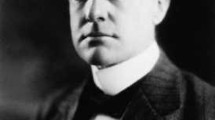Abstract
AstroSat, India’s first UV and X-ray astronomy satellite, has completed over six years of observations while in orbit around the Earth. It has carried out detailed studies of all kinds of objects in the Universe ranging from single stars, stars in clusters, binary stars with compact companions like neutron stars and black holes, star formation in galaxies, supermassive black holes in active nuclei of galaxies, etc. Here, I give a short description of its UV and X-ray telescopes and detectors. Some of the most important results obtained using AstroSat will be described in Part II.
Similar content being viewed by others
Suggested Reading
K. P. Singh et al., in Space Telescopes and Instrumentation, Ultraviolet to Gamma Ray, Proc. of SPIE, Vol.9144, 91441S, 2014.
K. H. Navlagund et al., AstroSat: Configuration and realization J. Astrophys. Astr., Vol.38, 34, 2017.
R. Pandiyan et al., Planning and scheduling of payloads of AstroSat during initial and normal phase observations, J. Astrophys. Astr., Vol.38, 35, 2017.
S. N. Tandon et al., In-orbit performance of UVIT and first results, J. Astrophys. Astr., Vol.38, 28, 2017.
S. N. Tandon et al., In-orbit calibrations of the ultraviolet imaging telescope The Astronomical Journal, Vol.154, pp.128–142, 2017.
H. M. Antia et al., Calibration of the large area X-ray proportional counter (LAXPC) instrument on board AstroSat, ApJ Suppl., Vol. 231, p.10, 2017.
V. Navalkar et al., Pre-flight evaluation of the soft X-ray telescope optics aboard AstroSat, J. Astrophys. Astr., Vol.42, No.103, 2021.
K. P. Singh et al., Soft X-ray focusing telescope aboard AstroSat: Design, characteristics and performance, J. Astrophys. Astr., Vol.38, 29, 2017.
V. Bhalerao et al., The cadmium zinc telluride imager on AstroSat, J. Astrophys. Astr., Vol.38, No.31, 2017.
M. C. Ramadevi et al., Scanning sky monitor (SSM) onboard AstroSat, Experimental Astronomy, Vol.44, pp.11–23, 2017.
Acknowledgement
I acknowledge the efforts of all the scientists and engineers in TIFR, IIA, IUCAA, ISRO, ISSDC, RRI, PRL, VSSC, University of Leicester, UK, Canadian Space Agency, and several private contractors who made AstroSat a reality. I also acknowledge ISRO and the Payload Operation Centres (POCs) for allowing me to reproduce the pictures and figures of the payloads here. The work of all the people at the ISSDC and at the POCs of individual payloads, who are scheduling observations round the clock, and providing data to all the observers, is cheerfully acknowledged.
Author information
Authors and Affiliations
Corresponding author
Additional information
Kulinder Pal Singh is an X-ray Astronomer who has worked on balloon, rocket and satellite borne X-ray telescopes and detectors for astronomy. He carries out multi-wavelength observations and data analysis. He developed India’s first X-ray focusing telescope for AstroSat at TIFR, Mumbai. He is an INSA Senior Scientist at IISER, Mohali after retiring from TIFR in 2017.
Rights and permissions
About this article
Cite this article
Singh, K.P. AstroSat: I. The Scientific Instruments. Reson 27, 513–528 (2022). https://doi.org/10.1007/s12045-022-1346-x
Published:
Issue Date:
DOI: https://doi.org/10.1007/s12045-022-1346-x




